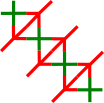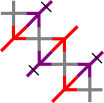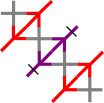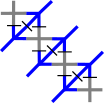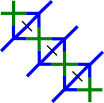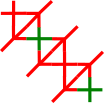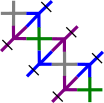Bias Grounds
Contents
- Introduction
- Traditional Bias Ground
- Bias Ground crossed rose style
- Bias Ground crossed alternating
- Bias Ground with a diagonal in between
- Bias Ground crossed and a diagonal in between
- Unit bias in a diamond
- Bias Ground crossed and in a diamond
- Short bias
** Solo
** Crossed - Double bias
- Bias with vertical
- Stretched
Introduction
Traditionally, a bias ground is made as follows: make two stitches diagonally, make a stitch in the middle with these two, make two diagonal, stitch in the middle, etc.
Traditional Bias Ground
examples with one middle stitch
examples with two different middle stitches
Bias Ground crossed rose style
See also mrs Whiting’s index: D6 and F4.
Bias Ground crossed alternating
See also mrs Whiting’s index: E6.
Bias Ground with a diagonal in between
Bias Ground crossed and a diagonal in between
Unit bias in a diamond
Bias Ground crossed and in a diamond
Short Bias
Solo
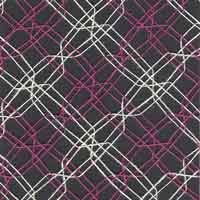 Take just one unit of the Bias ground and place them all in the same direction, or in alternating directions. The latter may give nice results in two colours. The placing of the units in alternating directions is also shown in mrs Irvine’s paper Developing a Mathematical Model for Bobbin Lace.
Take just one unit of the Bias ground and place them all in the same direction, or in alternating directions. The latter may give nice results in two colours. The placing of the units in alternating directions is also shown in mrs Irvine’s paper Developing a Mathematical Model for Bobbin Lace.
Crossed

Double bias
Bias with vertical
Stretched
The pictures below show three different units. The units are placed like the white tiles on a checker board.
The one on the left is a bias ground, stretched vertically, as found in the Whiting index F4. Experimenting with stitches, I created the units in the middle and the right. The ground in the middle is equivalent to the little snowflake. The one on the right proved to be a real surprise! See the example. These grounds also look nice when made on a hexagonal raster, connecting the units with a short plait.

